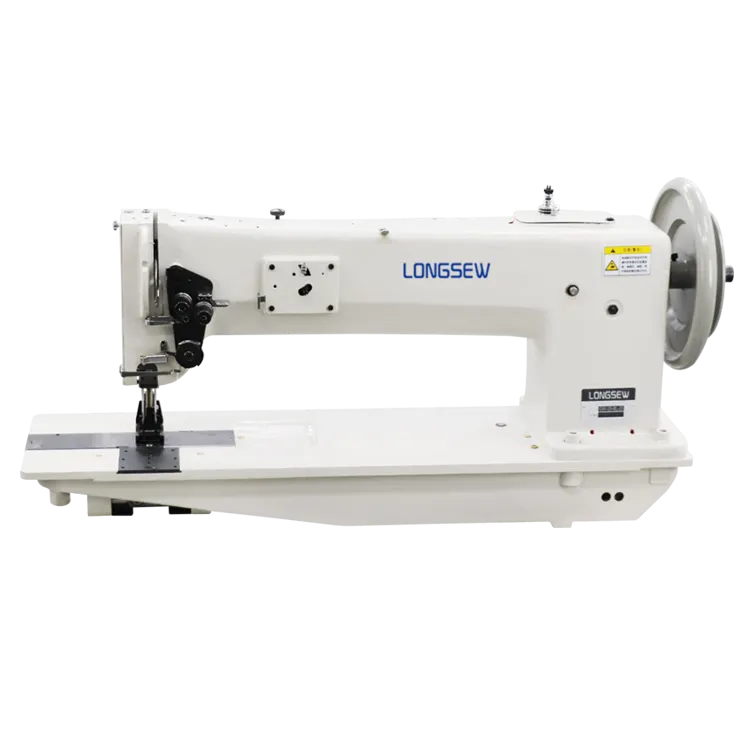cnc upholstery sewing machine
Exploring the Advancements in CNC Upholstery Sewing Machines
In the world of textile and upholstery manufacturing, precision and efficiency are paramount. The introduction of Computer Numerical Control (CNC) technology has transformed various industries, and upholstery is no exception. CNC upholstery sewing machines represent a significant leap forward, enabling manufacturers to produce high-quality products with unprecedented speed and accuracy.
What is a CNC Upholstery Sewing Machine?
CNC upholstery sewing machines are specialized sewing machines that use computerized controls to automate the sewing process. Unlike traditional sewing machines that require manual operation, CNC machines are programmed to perform intricate sewing tasks with precision. These machines can handle a variety of fabrics and materials, including leather, vinyl, and specialty textiles, making them ideal for upholstery applications.
Benefits of CNC Upholstery Sewing Machines
1. Precision and Consistency One of the most significant advantages of CNC technology is its ability to deliver consistent results. Operators can program the machine to execute complex sewing patterns with exact dimensions. This ensures that every piece produced is uniform, which is crucial in the upholstery industry where aesthetics and fit are vital.
2. Increased Productivity CNC machines can operate at high speeds, significantly reducing production time. This is particularly beneficial for manufacturers that require large volumes of upholstery products in a short period. With the ability to automate repetitive tasks, workers can focus on quality control and other important aspects of production, further enhancing overall efficiency.
3. Flexibility and Versatility Modern CNC upholstery sewing machines come equipped with a range of features that allow them to handle various sewing tasks. From straight stitches to decorative designs, these machines can be customized to meet specific requirements. This flexibility is essential for businesses that cater to diverse client needs and changing market demands.
4. Reduced Labor Costs By automating many sewing processes, manufacturers can reduce their reliance on manual labor. While skilled operators are still essential for setup and oversight, the overall need for a large workforce diminishes. This can lead to significant savings in labor costs, ultimately benefiting the bottom line.
cnc upholstery sewing machine

5. Enhanced Quality Control With CNC machines, quality control becomes more manageable. The precision of the sewing process minimizes the risk of human error, ensuring that products meet high-quality standards. Additionally, these machines often come with built-in diagnostics, allowing for real-time monitoring and adjustments during production.
Applications in the Upholstery Industry
CNC upholstery sewing machines find applications in various areas of the upholstery industry. They are commonly used to create upholstery for furniture, automotive interiors, boat interiors, and other custom textile projects. With the ability to work with different materials and stitches, they are highly adaptable to various design needs.
For instance, in the automotive sector, CNC machines can sew intricate patterns into leather seats, enhancing both aesthetics and durability. In furniture manufacturing, they can produce detailed seams and finishes that elevate the overall quality of the product. As customization becomes increasingly popular among consumers, the versatility of CNC upholstery sewing machines allows manufacturers to respond effectively to these trends.
Future of CNC Upholstery Sewing Machines
As technology continues to evolve, the future of CNC upholstery sewing machines looks promising. Innovations in artificial intelligence and machine learning may lead to even greater automation and process optimization. For instance, future machines could use AI to predict maintenance needs or adapt production processes based on the fabric type being used.
Moreover, advancements in software will likely streamline the design-to-production workflow, allowing designers to input their visions directly into the CNC system. This integration could significantly shorten lead times and enhance collaboration between designers and manufacturers.
Conclusion
CNC upholstery sewing machines are revolutionizing the textile and upholstery industries, providing manufacturers with tools to improve precision, efficiency, and quality. As the demand for customized and high-quality upholstery continues to grow, the adoption of CNC technology will likely become even more widespread. The ongoing advancements in this field promise to deliver even more capabilities, ensuring that the future of upholstery manufacturing is both innovative and efficient.
-
Heavy Duty Leather Sewing Machine: A Must-Have for Professional LeatherworkNewsMay.28,2025
-
Leather Sewing Machine: Essential for High-Quality LeathercraftNewsMay.28,2025
-
Extra Heavy Duty Sewing Machine for Premium Leather ApplicationsNewsMay.28,2025
-
Walking Foot Cylinder Arm Sewing Machine: Precision and Power CombinedNewsMay.28,2025
-
Industrial Cylinder Arm Sewing Machine: Engineered for High-Performance StitchingNewsMay.28,2025
-
Cylinder Bed Sewing Machine: A Powerful Solution for Precision StitchingNewsMay.28,2025
-
Zigzag Sewing MachineNewsMay.12,2025





























